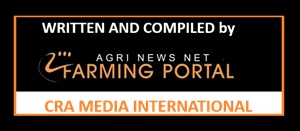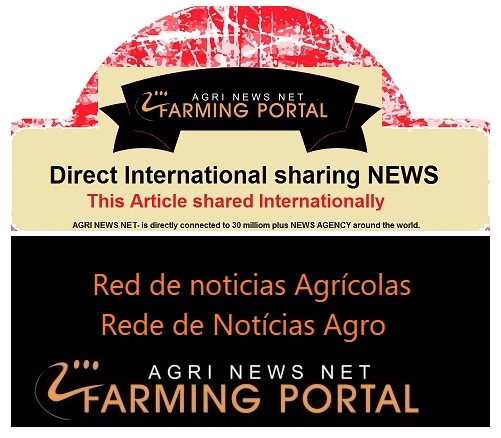World Farming Agriculture Commodity news - Weekly Updated - Exclusive and very popular - Delivering a Media service 365 days of the year.
Ag Economists’ Monthly Monitor weigh in on the main factors driving the ag economy in 2025.
Here’s a concise summary of the key points from the report:
Farm Income Outlook for 2025
- Net farm income is projected to reach $180.1 billion in 2025, a $41 billion increase from 2024.
- Net cash farm income is expected to rise to $193.7 billion (+$34.5 billion).
- A 34.5% jump in government payments (from $9.3B to $42.4B) is a major contributor to this increase.
Cattle Market Strength
- Economists are bullish on cattle due to shrinking supplies and strong demand, making it the top-performing commodity in 2025.
Row Crop Recession Concerns
- 64% of economists believe the row crop sector is in a recession, while 36% disagree.
- Corn and soybean prices have improved, but uncertainties in trade and biofuels policy create risks.
- Some argue agriculture isn’t in a recession due to $31B in aid, stable land values, and strong rents.
Consolidation Risks
- 86% of economists believe the current economic conditions will accelerate consolidation in agriculture.

The strains of avian influenza infecting dairy cows in the U.S. have not been detected in the EU or Britain, according to a French food safety official. The USDA confirmed that U.S. dairy cattle tested positive for a previously unreported strain of bird flu. While bird flu has caused widespread poultry culling globally, its spread to U.S. dairy cows and a human fatality in Louisiana have raised concerns about potential human transmission. France has seen a significant drop in bird flu outbreaks due to duck vaccinations. The U.S. and Canada have eased restrictions on some French poultry imports.
Summary of FAO Food Price Report (January 2025)
Global food commodity prices declined in January, led by sharp drops in sugar and vegetable oils, according to the Food and Agriculture Organization (FAO).
- FAO Food Price Index: Fell to 124.9 points from 127.0 in December but remained 6.2% higher year-on-year and 22% below its March 2022 peak.
- Sugar Prices: Dropped 6.8% monthly and 18.5% annually, driven by improved supply from Brazil and resumed exports from India.
- Vegetable Oils: Declined 5.6%, with palm and rapeseed oil prices falling, while soy and sunflower oil remained stable. Still up 24.9% from last year.
- Meat Prices: Decreased by 1.7% in January.
- Cereal Prices: Rose slightly by 0.3% but remained 6.9% lower than a year ago. Maize prices increased due to reduced U.S. production, while rice dropped 4.7% amid ample export supplies.
- Dairy Prices: Increased 2.4% month-on-month and 20.4% year-on-year, driven by a surge in cheese prices.
FAO Cereal Production Forecast
- 2024 Global Cereal Output: Revised down slightly to 2.840 billion tonnes due to lower U.S. maize production.
- Winter Wheat Sowing: Increased in France, Germany, and the UK but declined in Russia due to weather conditions.
- Maize Outlook: Southern Hemisphere harvests begin in Q2, with improved yields expected in Argentina and Brazil; South Africa increased plantings due to high prices.
- Global Cereal Utilisation (2024/25): Raised by 0.9% to 2.869 billion tonnes.
- Global Cereal Stocks: Expected to decline by 2.2% by 2025, mainly due to lower U.S. maize reserves.
- International Cereal Trade (2024/25): Projected to contract by 5.6% to 483.5 million tonnes, primarily due to lower Chinese demand for barley, maize, and wheat.
 World Farming Agriculture and Commodity news - Short update 3rd February 2025
World Farming Agriculture and Commodity news - Short update 3rd February 2025

Global wheat imports are expected to decline in 2025 due to slowing economic growth among key buyers, a stronger U.S. dollar, and increased local cereal production. Despite global wheat stockpiles reaching a nine-year low, reduced demand from major importers could limit price increases.
China, the world’s top wheat importer, is set to buy less than half of last year's volume in early 2025, with imports expected to drop 37% to 8 million metric tons due to higher domestic production. Indonesia and Egypt are also likely to slow purchases, with Indonesia benefiting from a rebound in rice production and Egypt facing economic struggles.
The strengthening U.S. dollar has made wheat imports more expensive, as emerging market currencies, including China’s yuan, Indonesia’s rupiah, and Egypt’s pound, have weakened. China has already delayed up to 600,000 metric tons of imports, and traders expect further declines.
Other key importers, including Iraq, have reduced wheat purchases due to increased domestic output. While concerns about adverse weather in major exporting regions persist, the overall slowdown in wheat imports may offset supply risks, keeping prices under pressure.

Commodities February 09
















